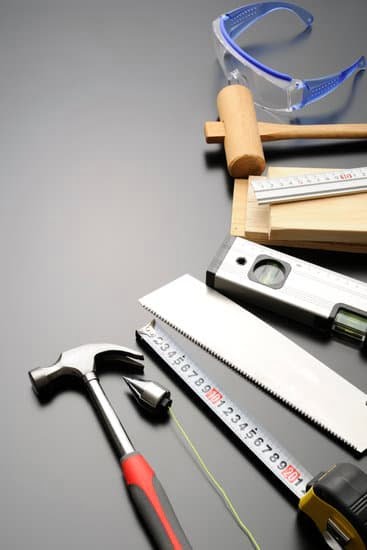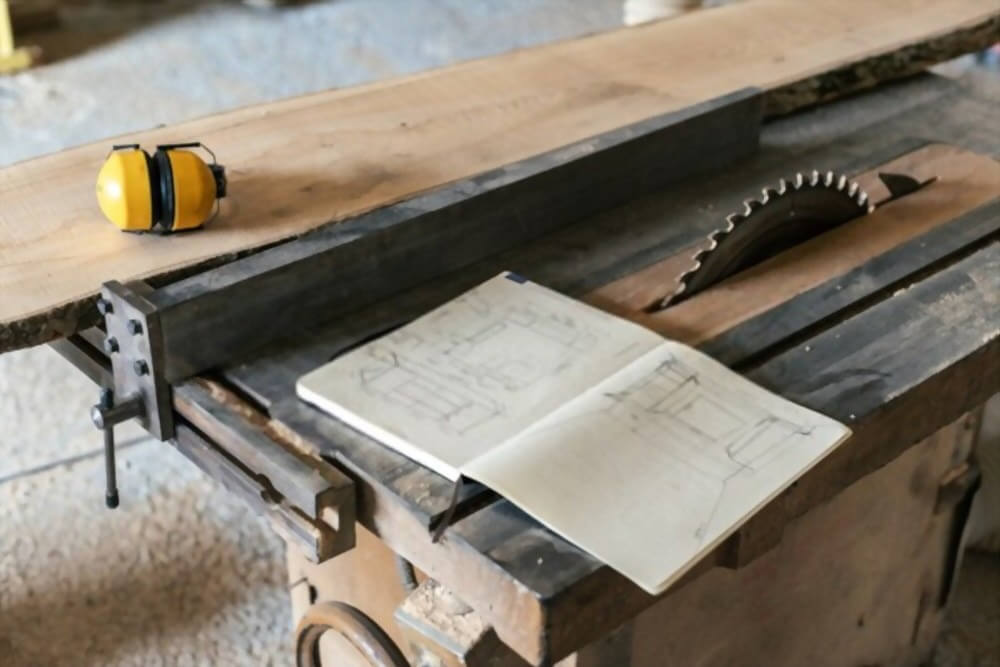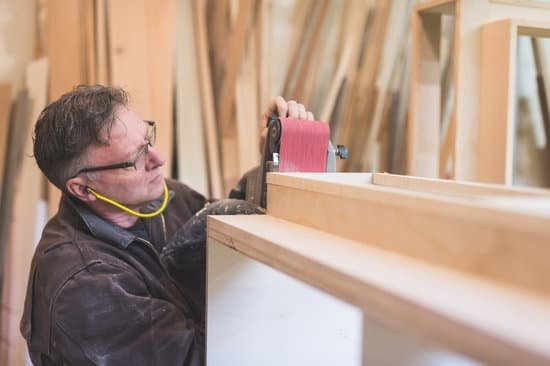Are you ready to learn how to build a great woodworking bench? A quality woodworking bench is an essential tool for any woodworker, providing a sturdy and stable work surface for a variety of projects. Whether you’re a seasoned professional or just starting out in the world of woodworking, having a reliable and well-built bench can make all the difference in the success of your projects.
In this article, we will guide you through the process of building your own woodworking bench, from selecting the right materials and tools to customizing and maintaining your finished bench. We’ll explore the importance of having a quality woodworking bench, discuss the various design options and sizes available, and provide you with step-by-step instructions for constructing the base, work surface, vises, storage features, and more.
By following our comprehensive guide, you’ll be able to create a customized woodworking bench that meets your specific needs and preferences. Whether you’re looking to build your first bench or upgrade an existing one, this article will equip you with valuable insights and practical tips for achieving successful results. So let’s get started on building the foundation for your woodworking endeavors.
Materials and Tools Needed for Building a Woodworking Bench
Building a great woodworking bench requires careful planning and consideration of the materials and tools needed for the construction process. The choice of materials will determine the overall durability and strength of your bench, while the right tools will ensure a smooth and efficient building experience.
When it comes to materials, hardwoods such as maple, oak, or beech are popular choices for constructing a sturdy woodworking bench. These woods are known for their strength and ability to withstand heavy use. Additionally, you will need a variety of hardware such as screws, bolts, and wood glue to assemble the different components of your bench.
In terms of tools, a table saw, circular saw, chisels, hand planes, clamps, and a power drill are essential for cutting and shaping the wood to build your bench. A measuring tape, square, and level will also be crucial for ensuring accuracy during assembly. Investing in high-quality materials and tools is key to building a woodworking bench that will stand the test of time.
Lastly, safety equipment such as goggles, gloves, and hearing protection should not be overlooked when embarking on this project. Adhering to safety protocols and using the appropriate tools will ensure that you can build a great woodworking bench without compromising your well-being. By carefully selecting the right materials and tools for your project, you can set yourself up for success in creating a durable and functional woodworking bench that will serve you well for years to come.
Choosing the Right Design and Size for Your Woodworking Bench
When it comes to building a woodworking bench, choosing the right design and size is crucial to ensure that it meets your specific needs and requirements. There are various factors to consider when deciding on the design and size of your woodworking bench, including the type of projects you will be working on, the available space in your workshop, and your own personal preferences.
Consider Your Woodworking Projects
Before you start building your woodworking bench, think about the types of projects you typically work on. For example, if you primarily focus on small-scale projects such as carving or detailed joinery work, a smaller bench may be more suitable. On the other hand, if you frequently work on larger projects such as furniture making or cabinet building, a larger and sturdier bench with ample workspace would be more appropriate.
Evaluate Your Workshop Space
The available space in your workshop will also play a significant role in determining the design and size of your woodworking bench. Measure the area where you plan to place your bench and take into account any existing machinery or equipment that may affect its placement. A compact or foldable design may be necessary if space is limited, while those with more room to spare can opt for a larger, permanent bench.
Personal Preferences and Ergonomics
Lastly, take into consideration your own personal preferences and the ergonomics of the bench. Some woodworkers prefer a traditional style with a tool tray and built-in vises, while others may prefer a more modern approach with adjustable height capabilities. Additionally, consider your own height and working habits to ensure that the chosen design and size will provide comfortable working conditions.
By carefully evaluating these factors, you can make an informed decision on the best design and size for your woodworking bench that will enhance your overall woodworking experience while providing functionality and efficiency in carrying out various woodworking tasks.
Step-by-Step Guide to Building the Base of Your Woodworking Bench
Building the base of a woodworking bench is a crucial step in creating a sturdy and reliable work surface for all your future projects. The base provides the foundation for the rest of the bench, so it’s essential to get this part right. Here’s a step-by-step guide on how to build the base of your woodworking bench:
1. Planning and Preparation: Before you start building the base, it’s important to have a clear plan in place. Decide on the dimensions of your bench and mark out where each component will go. Gather all the necessary materials and tools, including lumber, screws, a drill, and a saw.
2. Assembling the Legs: Start by assembling the legs of your woodworking bench. Cut four pieces of lumber to your desired leg height, and then attach them using wood screws to form two sets of “H” shapes. These will serve as the front and back legs of your bench.
3. Adding Stretchers: Once you have your leg assemblies ready, add stretchers between them to provide additional support and stability. Measure and cut pieces of lumber to fit between each set of legs, then secure them in place with screws.
4. Attaching Rails: To complete the base, attach rails between the front and back legs on both sides of your bench. These rails will provide further reinforcement for your workbench structure.
By carefully following these steps and taking your time with each stage of construction, you can ensure that the base of your woodworking bench is strong, stable, and built to last.
| Woodworking Bench Base Building Materials | Quantity |
|---|---|
| Lumber (2×4 or 4×4) | 12 pieces |
| Wood Screws (3 inches) | 48 screws |
| Saw | 1 |
| Drill | 1 |
Constructing the Work Surface and Vises for Your Woodworking Bench
When it comes to building a great woodworking bench, constructing the work surface and vises is a crucial step in the process. The work surface of your bench should be flat, sturdy, and able to withstand the pressure and force of your woodworking projects. Additionally, vises are essential for holding your workpieces securely in place while you work on them. In this section, we will discuss how to build a solid work surface and install vises for your woodworking bench.
To construct a durable work surface for your woodworking bench, consider using hardwood like maple or oak. These materials are strong and can handle heavy-duty tasks without warping or deteriorating over time.
Start by laminating several boards together to create a thick and stable top, then trim it to the desired size. Once you have the basic shape of your work surface, use a hand plane or sander to smooth out any imperfections and ensure that it is perfectly flat.
As for mounting vises on your woodworking bench, consider installing both front and end vises to provide versatility when clamping different sizes of workpieces. Front vises are typically used for holding small pieces horizontally, while end vises are ideal for securing longer boards vertically. Make sure to properly reinforce the areas where you will be attaching the vises with additional supports and hardware to ensure they are securely anchored.
Once you have successfully constructed the work surface and installed the necessary vises on your woodworking bench, you’ll be one step closer to completing this essential piece of equipment for your workshop.
| Woodworking Bench Component | Consideration |
|---|---|
| Work Surface Material | Use hardwood like maple or oak for durability |
| Vise Installation | Consider mounting front and end vises for versatility |
| Reinforcements | Ensure proper reinforcement for vise attachment points |
Adding Storage and Organization Features to Your Woodworking Bench
When it comes to building a great woodworking bench, adding storage and organization features is essential for maximizing functionality and efficiency in your workspace. There are several elements you can incorporate into your bench to keep your tools and materials organized and easily accessible while working on your projects. Here, we will discuss some key storage and organization features that you can add to your woodworking bench.
Firstly, one of the most common storage solutions for a woodworking bench is installing drawers or cabinets underneath the work surface. These can be used to store hand tools, measuring instruments, hardware, and other small items that you use frequently. It’s important to carefully plan the size and layout of these storage areas to ensure that they complement your workflow and don’t interfere with the structural integrity of the bench.
Another useful addition to your woodworking bench is a tool rack or pegboard mounted on the back or sides of the bench. This provides a convenient way to hang larger hand tools such as saws, chisels, planes, clamps, and other implements within arm’s reach while you work. This not only keeps your work area tidy but also helps prevent damage to your tools by keeping them off of the work surface.
Additionally, consider incorporating shelves or trays into the design of your woodworking bench. These can be used to store project components, reference materials, safety gear, or any other items that you need close at hand during your woodworking tasks. By customizing these storage options based on your specific needs and preferences, you can create a personalized workstation that enhances both productivity and enjoyment in your woodworking endeavors.
By integrating these storage and organization features into your woodworking bench construction plans, you can streamline your work process and create a more efficient workspace. Whether you’re an experienced woodworker or just starting out in the craft, understanding how to build a great woodworking bench with suitable storage solutions will greatly enhance your overall experience in the workshop.
Optional Upgrades and Customizations for Your Woodworking Bench
When it comes to building a woodworking bench, there are countless optional upgrades and customizations that can take your bench from good to great. Whether you’re looking to add extra functionality, improve the durability, or simply personalize the look of your bench, there are plenty of options to consider. Here are some ideas for optional upgrades and customizations to take your woodworking bench to the next level:
- Adding a tool well or tool rack for convenient storage of hand tools
- Installing a shelf or drawer unit underneath the work surface for additional storage
- Incorporating built-in clamping systems or holdfasts for securing workpieces
- Upgrading the work surface with a replaceable sacrificial top for protection against damage
- Customizing the height or width of the bench to better suit your individual needs and preferences
These optional upgrades and customizations can add versatility, convenience, and personalization to your woodworking bench, making it a more practical and enjoyable tool for your woodworking projects.
In addition to these practical upgrades, you may also choose to customize the appearance of your bench with decorative elements such as inlays, carvings, or custom finishes. Whatever upgrades and customizations you choose, be sure to consider how each addition will impact the overall functionality and usability of your woodworking bench.
Ultimately, the goal is to create a bench that not only meets your current needs but also has the flexibility to adapt as your skills and preferences evolve. By carefully considering these optional upgrades and customizations in the construction of your woodworking bench, you can create a truly personalized workspace that enhances your craft.
Tips for Maintaining and Caring for Your Woodworking Bench
Maintaining and caring for your woodworking bench is crucial in ensuring its longevity and functionality. Proper maintenance will also ensure that your bench continues to provide a stable and reliable work surface for all your woodworking projects. Here are some tips to help you keep your woodworking bench in top condition:
Regular Cleaning
One of the most important aspects of maintaining your woodworking bench is regular cleaning. Sawdust, dirt, and debris can accumulate on the surface and in crevices over time, so it’s essential to clean your bench after each use. Use a brush or vacuum to remove any sawdust, and wipe down the surface with a damp cloth to remove any remaining dirt or grime.
Protecting the Surface
To protect the work surface of your woodworking bench from scratches, stains, and moisture damage, consider applying a protective finish. There are various options available, such as varnish, polyurethane, or wax, each with its own benefits. A protective finish not only enhances the appearance of your bench but also adds a layer of durability to withstand heavy use.
Inspecting and Repairing
Regularly inspect your woodworking bench for any signs of wear and tear. Check for loose bolts or screws, cracks in the wood, or any other damage that may compromise the stability of the bench. It’s important to address any issues promptly to prevent further damage and maintain the structural integrity of your workbench.
By following these tips for maintaining and caring for your woodworking bench, you can ensure that it remains in excellent condition for years to come. Taking proper care of your workbench will not only extend its lifespan but also contribute to better results in your woodworking projects.
Conclusion
In conclusion, building a great woodworking bench is a rewarding and fulfilling endeavor for any woodworker. By following the step-by-step guide and using the right materials and tools, you can create a durable and functional workbench that will serve you well for years to come. The importance of having a quality woodworking bench cannot be overstated, as it provides a stable and reliable workspace for all your woodworking projects.
Once you have completed the construction of your woodworking bench, you will be able to enjoy the benefits of having a dedicated space for your woodworking activities. The sturdy base, well-constructed work surface, and efficiently designed storage features will make every woodworking task easier and more enjoyable. With the addition of optional upgrades and customizations, you can tailor your woodworking bench to fit your specific needs and preferences.
In essence, building a great woodworking bench is not just about creating a piece of furniture; it’s about investing in your craft and creating an essential tool that will enhance your capabilities as a woodworker. So take the time to plan, build, and maintain your woodworking bench, and you’ll find that it becomes an indispensable part of your workshop for many years to come.
Frequently Asked Questions
Is It Cheaper to Buy or Build a Workbench?
The cost of buying versus building a workbench depends on various factors such as the quality of materials, size, and custom features. Building a workbench can be cheaper if you have the skills and access to affordable materials.
What Is the Best Wood for a Woodworking Bench?
The best wood for a woodworking bench is hardwood like maple, beech, or oak. These woods are durable, dense, and able to withstand the rigors of heavy-duty woodworking tasks. They also offer stability and longevity.
What Makes a Good Woodworking Bench?
A good woodworking bench is sturdy, flat, and heavy enough to remain stable during use. It should have a smooth work surface, sturdy vises or clamps for holding workpieces securely, and sufficient storage or organizational features for tools and supplies.

Hi everyone! I’m a woodworker and blogger, and this is my woodworking blog. In my blog, I share tips and tricks for woodworkers of all skill levels, as well as project ideas that you can try yourself.





